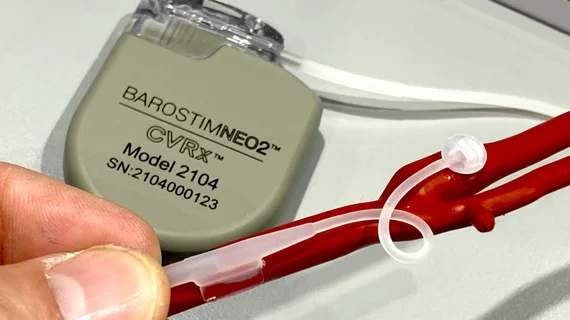CMS increases reimbursement for CVRx’s implantable Barostim device for heart failure
CVRx, a Minneapolis-based medical device company focused on heart failure treatments, is celebrating a key update the Centers for Medicare and Medicaid Services (CMS) included in the 2024 Medicare Hospital Outpatient Prospective Payment System (OPPS).
According to the 2024 OPPS final rule, CVRx’s Barostim technology for heart failure is now assigned to a New Technology APC 1580 code, which is associated with an average Medicare payment amount of $45,000. This represents a significant update of its previous average payment amount, $29,000, from when it was assigned to an APC 5465 code.
“We sincerely appreciate the consideration taken by CMS of the resource requirements associated with the Barostim implant procedure,” Nadim Yared, president and CEO of CVRx, said in a statement. “We believe that reassignment to APC 1580 will facilitate increased access to the therapy for Medicare patients with heart failure by offering facilities sufficient reimbursement for the procedure. We are grateful for the support of the cardiology physician community in sharing their positive Barostim patient experience.”
What is the Barostim device?
Barostim is an implantable device designed for the treatment of patients with congestive heart failure and a low or reduced ejection fraction. It works by sending small electrical pulses to certain sensors in the neck, which then send signals to the brain to help regulate the patient’s heart, kidneys and vascular system. These signals are typically sent without therapy, but this function is diminished in heart failure patients, leading to significant health risks.
Patients who already have a defibrillator are still eligible to receive a Barostim device. A majority of Barostim patients already have a defibrillator.
Barostim gained approval from the U.S. Food and Drug Administration and CE mark approval in part thanks to data gathered during the BeAT-HF trial, which examined quality of life metrics, exercise capacity and functional status in heart failure patients followed for at least six months after Barostim implantation. Additional details about that trial are available here. It was published in the Journal of the American College of Cardiology back in July 2020.[1]

